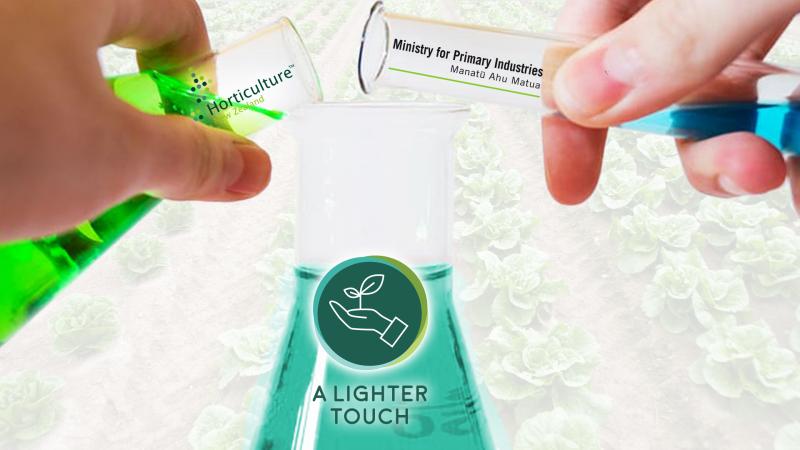The news is much cheerier than when I last reported to NZIAHS members, although the economic – and employment – outlook is somewhat grim.
The Covid Alert Level 4 which confined most of us to “bubbles” has been reduced to Level 1, more funding has been announced for research organisations and the 2020 Birthday Honours List included gongs for four prominent people who have contributed to the wellbeing of the agriculture and horticulture sectors.
I must confess I didn’t do a little dance, as the Prime Minister did on learning we could drop down to Alert Level 1. But I shared her elation. At that level, the risk of exposure to COVID-19 and transmission in the community in New Zealand is judged to be very low. This means people generally can fully participate in society without any COVID-19 related restrictions and get back to work, although strict border measures remain.
Here’s hoping those border measures are strictly policed. Our experience with biosecurity incursions has demonstrated how easy it is for something nasty to slip past the monitors and do great economic damage to the animals or crops they infest. As the Ministry of Health website says: “It’s still important to keep in mind that COVID-19 is uncontrolled in many areas overseas, and we should not be complacent because COVID-19 can spread quickly if it re-emerges.”
$401.3m for innovation and R&D
I welcome the $401.3 million funding boost for entrepreneurs, innovators and crown researchers announced this month by Research, Science and Innovation Minister Megan Woods.
The Government has earmarked $196 million of this for Crown Research Institutes. The money comes from Budget 2020 and the COVID Response and Recovery Fund, a key component of the Government strategy to create jobs and grow the economy. The investment aims “to set up the CRIs for success, so they can retain talent and continue their important research”.
Let’s trust it does the trick. As Dr Wood said, “Crown research institutes’ critical science capability is an integral part of New Zealand’s response to COVID-19 and our economic recovery.”
Another $150 million is being invested into a short-term R&D Loan Scheme, to enable businesses to continue to invest in R&D. The finance comes from the COVID Response and Recovery Fund.
Details of the R&D Loan Scheme have yet to be announced but the aim is to provide an immediate source of finance to R&D-performing businesses to enable them to maintain their R&D programmes and secure the jobs the programmes bring. “The R&D Loan Scheme will help ensure business feel confident to keep investment up in uncertain times,” Dr Wood said.
AgResearch will receive capital expenditure from the COVID Response and Recovery Fund, to develop a new fit-for-future scientific research facility and corporate headquarters at Lincoln University. The facility will encourage more collaboration in food and fibres research and innovation, to help farmers and growers manage challenges, and seize opportunities for getting more economic value out of products.
Here’s hoping the money is prudently spent to be of clear benefit to taxpayers – and so much the better if business quickly grow and jobs are generated.
We need to ensure the money ends up in the lab, paddock, orchard, and so on, and is not consumed in bureaucracy and empire-building. In the longer term I would like to see government develop clearer metrics to assess the public-good benefit(s) from ALL Government RS&T funding and create good performance indicators to monitor the flow of public monies down to the scientists and technologists who actually do the research and development.
Many of us at the cutting-edge are suspicious about the wastage of public money on bureaucracy and unnecessary duplication across a multitude of agencies and organisations. This waste is also experienced in the health and education sectors!
Collaboration
Agriculture Minister Damien O’Connor has been busy bringing good news, too, to the sectors served by our agscience colleagues. Among his announcements, the Government is backing a new $27 million project aimed at boosting sustainable horticulture production and New Zealand’s COVID-19 recovery efforts.
Scientists (all going well) should get a slice of the action.
 The programme – called A Lighter Touch – is a collaboration between government and industry. It is aimed at shifting the focus from traditional crop protection by carrying out research, understanding crop protection products, and integrating biological and ecological processes into food production in New Zealand.
The programme – called A Lighter Touch – is a collaboration between government and industry. It is aimed at shifting the focus from traditional crop protection by carrying out research, understanding crop protection products, and integrating biological and ecological processes into food production in New Zealand.
A Lighter Touch aims to create new growing methods and crop protection measures that reduce chemical use and spur greater production. Among the features:
- The Ministry for Primary Industries, through its Sustainable Food & Fibre Futures fund, is contributing $10.8 million and industry is contributing $16.2 million over the seven-year life of the project.
- The project will help to overcome problems with achieving the necessary scale in the use of agro-ecological products, and the investment in capacity and infrastructure needed to commercialise biopesticides and biological control agents.
Mr O’Connor described the horticulture sector as one of New Zealand’s export star performers, contributing around $6 billion a year to our economy. He noted that in Budget 2020 the Government committed $38.5 million to help the sector seize further opportunities for future growth. This programme adds to that investment.
Horticulture New Zealand Chief Executive Mike Chapman said the importance of biological methods and increasing production was reflected in the investment from the different sectors. He said: “Our growers want to take greater care of the environment but there are only a few viable options for pest and disease control currently. This is why this project is so critical. It will speed up development of agro-ecological crop protection techniques that are both environmentally sound and effective. We are excited by what this project will be able to deliver for the different sectors involved and New Zealand’s economy.”
The Foundation for Arable Research, Bragato Research Institute and Zespri are the other programme partners.
Scientists honoured
I salute these worthy winners of honours. At the same time it’s worth reminding you all that for our scientists must be nominated to win these awards. It’s up to us to ensure the cream of the crop are appropriately recognised.
Finally, I wish you all well as the country struggles to recover from the COVID-19 emergency.
Jon Hickford
President.

















